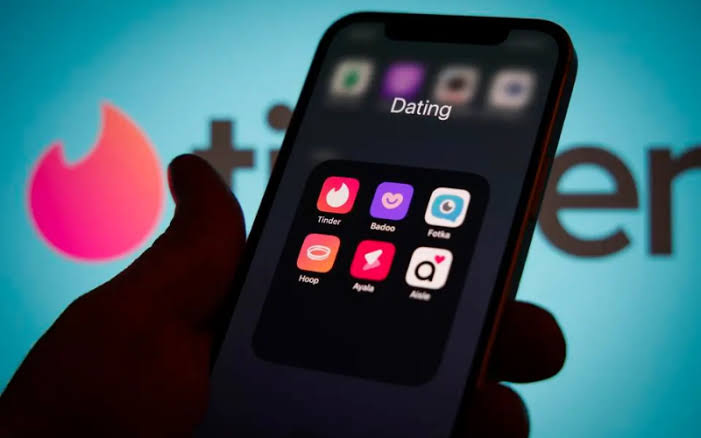
Let’s be honest—relationships can be beautiful, but they also come with their fair share of challenges. Sometimes, even with the best intentions, you and your partner might seem like you’re speaking entirely different languages.
You might think, “I show them love all the time, but they still feel neglected.” Or perhaps you’ve heard your partner say, “I don’t feel appreciated,” and you’re left confused because you feel like you’re doing everything right.
If that sounds familiar, don’t worry—you’re definitely not alone. This is where the concept of The 5 Love Languages, introduced by Dr. Gary Chapman, becomes a game-changer.
In this blog post, we’re diving deep into:
- What the 5 Love Languages are
- How to identify your own and your partner’s love language
- Practical examples for using each love language
- Common pitfalls and how to avoid them
- How to use love languages to deepen your connection
So grab your favorite drink, settle in, and let’s explore how to better speak the language of love with your partner.
Read Also: What is Agape love (The Divine Love)
What Are the 5 Love Languages?
Dr. Gary Chapman, a marriage counselor for over 30 years, introduced the concept of The 5 Love Languages in his bestselling book The 5 Love Languages: The Secret to Love That Lasts. His idea is simple yet powerful: everyone gives and receives love differently. If you and your partner speak different love languages, your emotional needs might go unmet—no matter how much you care about each other.
The five love languages are:
- Words of Affirmation
- Acts of Service
- Receiving Gifts
- Quality Time
- Physical Touch
Each person typically has one or two dominant love languages. When you and your partner learn to “speak” each other’s language, it creates a bridge of understanding and connection that can transform your relationship.
1. Words of Affirmation
Love sounds like compliments, encouragement, and kind words.
What It Looks Like:
If this is your or your partner’s love language, verbal expression is everything. Hearing things like:
- “You mean the world to me.”
- “I’m so proud of you.”
- “You look amazing today.”
…can be deeply affirming. It’s not just about flattery—it’s about feeling seen and appreciated through language.
How to Speak It:
- Write sweet notes or texts
- Say “I love you” often
- Offer verbal encouragement, especially during hard times
- Compliment their strengths and achievements
- Express gratitude out loud (“Thank you for making dinner. That meant a lot.”)
Common Pitfalls:
- Criticism cuts deeper here than for other people
- Silence or withholding praise can be unintentionally hurtful
Pro Tip:
If your partner values this language, don’t assume they already know how you feel. Say it, write it, show it with words.
2. Acts of Service
Love looks like doing things to help your partner feel supported.
What It Looks Like:
For some, actions speak louder than words. Whether it’s making breakfast, running errands, or fixing something around the house, these acts show, “I’m here for you.”
This love language is all about effort and reliability. When you lighten your partner’s load, you’re saying, “I see you, and I want to help.”
How to Speak It:
- Do the dishes without being asked
- Make them a cup of coffee in the morning
- Offer to take on a chore they dislike
- Handle something stressful for them (like calling customer service!)
Common Pitfalls:
- Promising to do something and then forgetting—this feels like a betrayal
- Thinking “I shouldn’t have to do this” leads to resentment
Pro Tip:
Even small acts matter. It’s not about grand gestures—it’s about consistent care.
3. Receiving Gifts
Love looks like meaningful, thoughtful presents that show “I was thinking of you.”
What It Looks Like:
This language isn’t about materialism—it’s about the meaning behind the gift. It could be a hand-written letter, a souvenir from a trip, or their favorite snack after a long day.
To someone who speaks this language, gifts are tangible symbols of love.
How to Speak It:
- Surprise them with a small token “just because”
- Pay attention to what they like and personalize your gifts
- Celebrate milestones with meaningful items
- Handwritten cards or personalized trinkets go a long way
Common Pitfalls:
- Forgetting special occasions like birthdays or anniversaries
- Giving generic or last-minute gifts can feel thoughtless
Pro Tip:
You don’t have to break the bank—focus on the thought, not the price tag.
4. Quality Time
Love feels like undivided attention and shared experiences.
What It Looks Like:
If your partner lights up when you spend time together—without distractions—this might be their primary language. They value presence, not just proximity.
Whether it’s a walk in the park, a movie night, or a deep conversation, the goal is to be fully there.
How to Speak It:
- Put away your phone during conversations
- Schedule regular date nights
- Engage in activities they enjoy
- Practice active listening (yes, really listen!)
Common Pitfalls:
- Being distracted or multitasking during time together
- Saying you’re “too busy” too often
Pro Tip:
You don’t need fancy dates. Even 15–30 minutes of undivided attention can make a world of difference.
5. Physical Touch
Love feels like a warm hug, a kiss on the forehead, or simply holding hands.
What It Looks Like:
To people who speak this love language, physical affection is the most powerful expression of love. They feel connected through touch—whether it’s sexual intimacy, cuddling, or a gentle hand on the back.
How to Speak It:
- Hold hands while walking
- Give regular hugs and kisses
- Cuddle while watching a movie
- Offer back rubs or playful touches
Common Pitfalls:
- Physical neglect can feel like emotional neglect
- Recoiling from touch can unintentionally feel like rejection
Pro Tip:
Be mindful of your partner’s comfort and boundaries—consent and mutual enjoyment are key.
How to Discover Your and Your Partner’s Love Language
Here are a few ways to find out what love language speaks the loudest for each of you:
- Take the Official Quiz: Available on 5lovelanguages.com
- Observe Their Behavior: How do they express love? That might be how they want to receive it.
- Listen to Complaints: If they say things like “You never say you appreciate me” or “You’re always on your phone,” they’re probably telling you what they need.
- Ask Them Directly: Sometimes the simplest way is the best way!
Can Love Languages Change Over Time?
Yes! Life circumstances, personal growth, or even stages in your relationship can shift your love language. Maybe physical touch was everything when you were dating, but now as new parents, acts of service mean more.
Keep checking in. Relationships evolve—and so can your emotional needs.
What If You and Your Partner Speak Different Love Languages?
Here’s the truth: That’s completely normal.
It’s rare that couples share the exact same primary love language. But that’s okay—it doesn’t mean you’re incompatible. It just means you need to learn how to speak your partner’s language intentionally.
Think of it like learning a new language for someone you love. It might take effort, but it’s worth it.
Quick Tips for Mixed-Language Couples:
- Create a “love plan”: Discuss what fills each other’s emotional tank.
- Balance your expressions: Even if their love language isn’t natural for you, make it a habit.
- Don’t expect perfection: Progress over perfection, always.
- Celebrate efforts: Thank each other for trying.
Why This Matters More Than Ever
In today’s fast-paced, distracted world, miscommunication in relationships is rampant. The 5 Love Languages are not a magic fix, but they are a powerful tool. They invite empathy, communication, and deeper understanding.
When you truly learn to speak your partner’s language, you show them love in the way they need it—not the way that’s easiest for you.
And when both partners commit to doing that? That’s where real connection lives.
Final Thoughts: Speaking Love, Fluently
Learning to speak your partner’s love language isn’t about changing who you are—it’s about expanding how you love. It’s about moving from “I love you” to “I love you in a way you feel.”
So here’s your challenge for the week:
- Find out your love language.
- Learn your partner’s.
- Do one small thing to speak it today.
Relationships thrive on small, intentional acts. And with the 5 Love Languages as your guide, you’re more than equipped to build a love that lasts—and speaks volumes.
TL;DR
- Everyone gives and receives love differently.
- The 5 Love Languages are: Words of Affirmation, Acts of Service, Receiving Gifts, Quality Time, and Physical Touch.
- Learn your partner’s language and speak it regularly.
- It takes practice, but the payoff is emotional intimacy and stronger connection.





